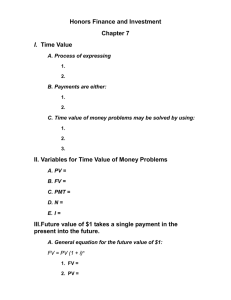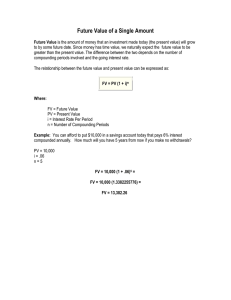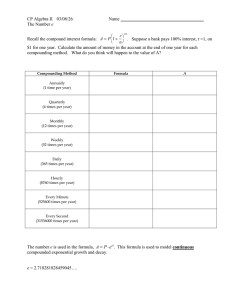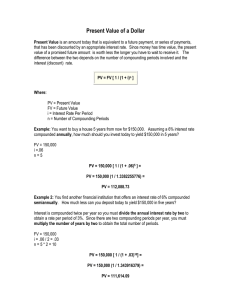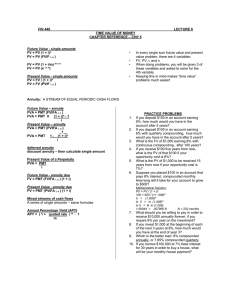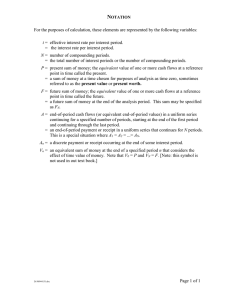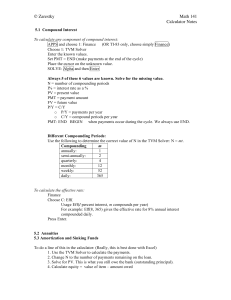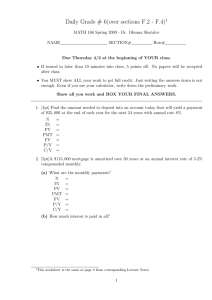Section 5.3
advertisement
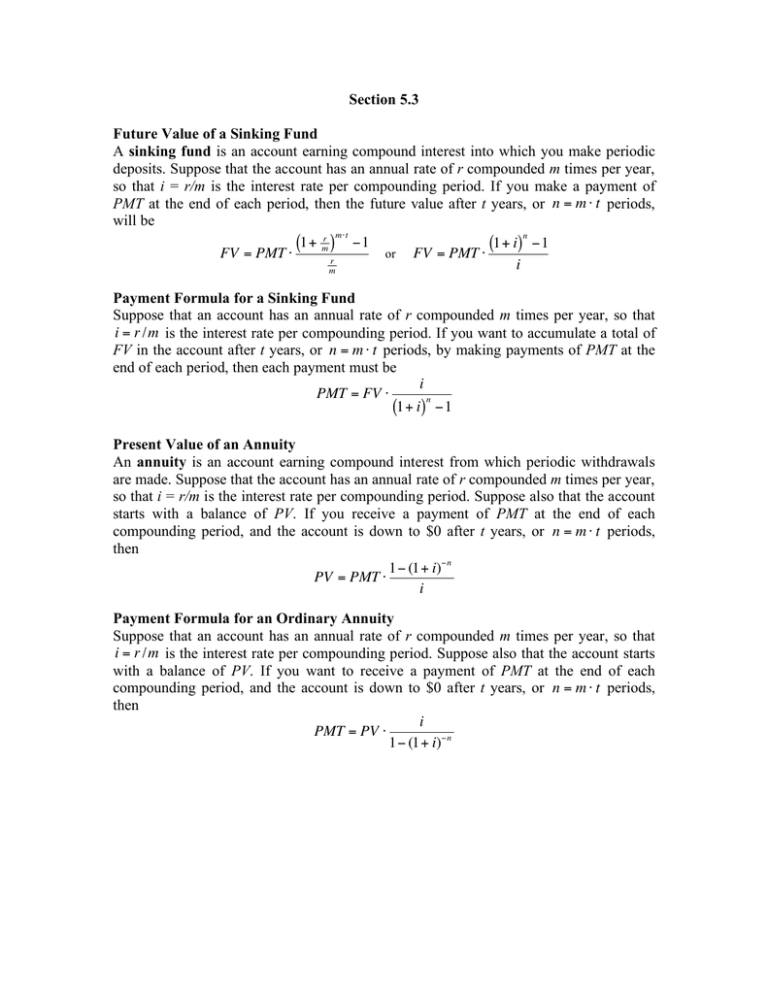
Section 5.3 Future Value of a Sinking Fund A sinking fund is an account earning compound interest into which you make periodic deposits. Suppose that the account has an annual rate of r compounded m times per year, so that i = r/m is the interest rate per compounding period. If you make a payment of PMT at the end of each period, then the future value after t years, or n = m " t periods, will be m" t n 1+ mr ) #1 1+ i) #1 ( ( FV = PMT " or FV = PMT " r ! i m ! Payment Formula for a Sinking Fund Suppose that an account has an annual rate of r compounded m times per year, so that ! i = r /m!is the interest rate per compounding period. If you want to accumulate a total of FV in the account after t years, or n = m " t periods, by making payments of PMT at the end of each period, then each payment must be i PMT = FV " n (1+ i) #1 ! Present Value of an Annuity An annuity is an account earning compound interest from which periodic withdrawals are made. Suppose that ! the account has an annual rate of r compounded m times per year, so that i = r/m is the interest rate per compounding period. Suppose also that the account starts with a balance of PV. If you receive a payment of PMT at the end of each compounding period, and the account is down to $0 after t years, or n = m " t periods, then 1# (1+ i)#n PV = PMT " i ! ! Payment Formula for an Ordinary Annuity Suppose that an account has an annual rate of r compounded m times per year, so that ! per compounding period. Suppose also that the account starts i = r /m is the interest rate with a balance of PV. If you want to receive a payment of PMT at the end of each compounding period, and the account is down to $0 after t years, or n = m " t periods, then i PMT = PV " 1# (1+ i)#n ! ! Problem 1. Find the amount accumulated in the sinking funds in the following exercises 1–2. (Assume end-of-period deposits and compounding at the same intervals as deposits.) • $100 deposited monthly for 10 years at 5% per year • $150 deposited monthly for 20 years at 3% per year Problem 2. Find the periodic payments necessary to accumulate the amounts given in the following exercises in a sinking fund. (Assume end-of-period deposits and compounding at the same intervals as deposits.) • $10,000 in a fund paying 5% per year, with monthly payments for 5 years • $20,000 in a fund paying 3% per year, with monthly payments for 10 years • $75,000 in a fund paying 6% per year, with quarterly payments for 20 years Problem 3. Find the present value of the annuity necessary to fund the withdrawals given in the following exercises. (Assume end-of-period withdrawals and compounding at the same intervals as withdrawals.) • $500 per month for 20 years, if the annuity earns 3% per year • $1000 per month for 15 years, if the annuity earns 5% per year • $1500 per quarter for 20 years, if the annuity earns 6% per year Problem 4. Find the periodic withdrawals for the annuities given in the following exercises. (Assume end-of-period withdrawals and compounding at the same intervals as withdrawals.) • $100,000 at 3%, paid out monthly for 20 years • $150,000 at 5%, paid out monthly for 15 years • $75,000 at 4%, paid out quarterly for 20 years • $200,000 at 6%, paid out quarterly for 15 years
